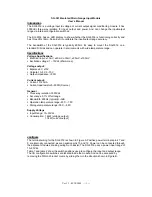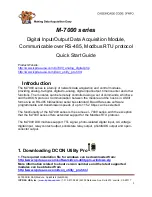
1A-14 Engine Control System
VS Sensor
The VS (vehicle speed) sensor is installed to the
transmission. The sensor is also equipped with a Hall
effect circuit. The magnet mounted to the transmission
output shaft is rotated together with the shaft to
generate a magnetic field. This Hall effect sensor
interacts with the magnetic field and generates and
sends a signal to the VIM. The VS sensor is energized
via meter fuse. The VIM uses VS signal pulses to judge
the vehicle speed.
Neutral Switch
The neutral switch (P/N switch in case of automatic
transmission) is installed to the transmission (shift lever
in case of automatic transmission), and is turned on
when the shift lever is moved to the neutral position.
The ECM receives the on/off signal from this neutral (or
P/N) switch to control the powertrain so that the driver
cannot start the engine as long as the shift lever is not
in the neutral (or parking) position.
Exhaust Brake Solenoid Valve
The exhaust brake solenoid valve is installed to the
rear of the right front wheel frame (some vehicle types
have different positions), and opens and closes the
vacuum path connected to the exhaust brake valve.
When this solenoid valve is turned on, the path is
opened and the vacuum is applied to the exhaust brake
valve. When the solenoid valve is turned off, the path is
closed and the atmospheric pressure is applied and
resultantly the exhaust brake valve is released. After
the exhaust brake switch is turned on and the vehicle
meets all the necessary conditions, the ECM turns on
the exhaust brake solenoid valve.
Atmospheric Pressure Sensor
The atmospheric pressure sensor is installed inside the
VIM and converts the atmospheric pressure into a
voltage signal. The VIM calculates the atmospheric
pressure from the voltage signal and sends the result to
the ECM. The ECM uses this atmospheric pressure to
calibrate the fuel injection quantity (altitude
compensation).
ECM
LNW21ASH008701
LNW21ASH008601
LNW21ASH009001
LNW21ASH007001
















































